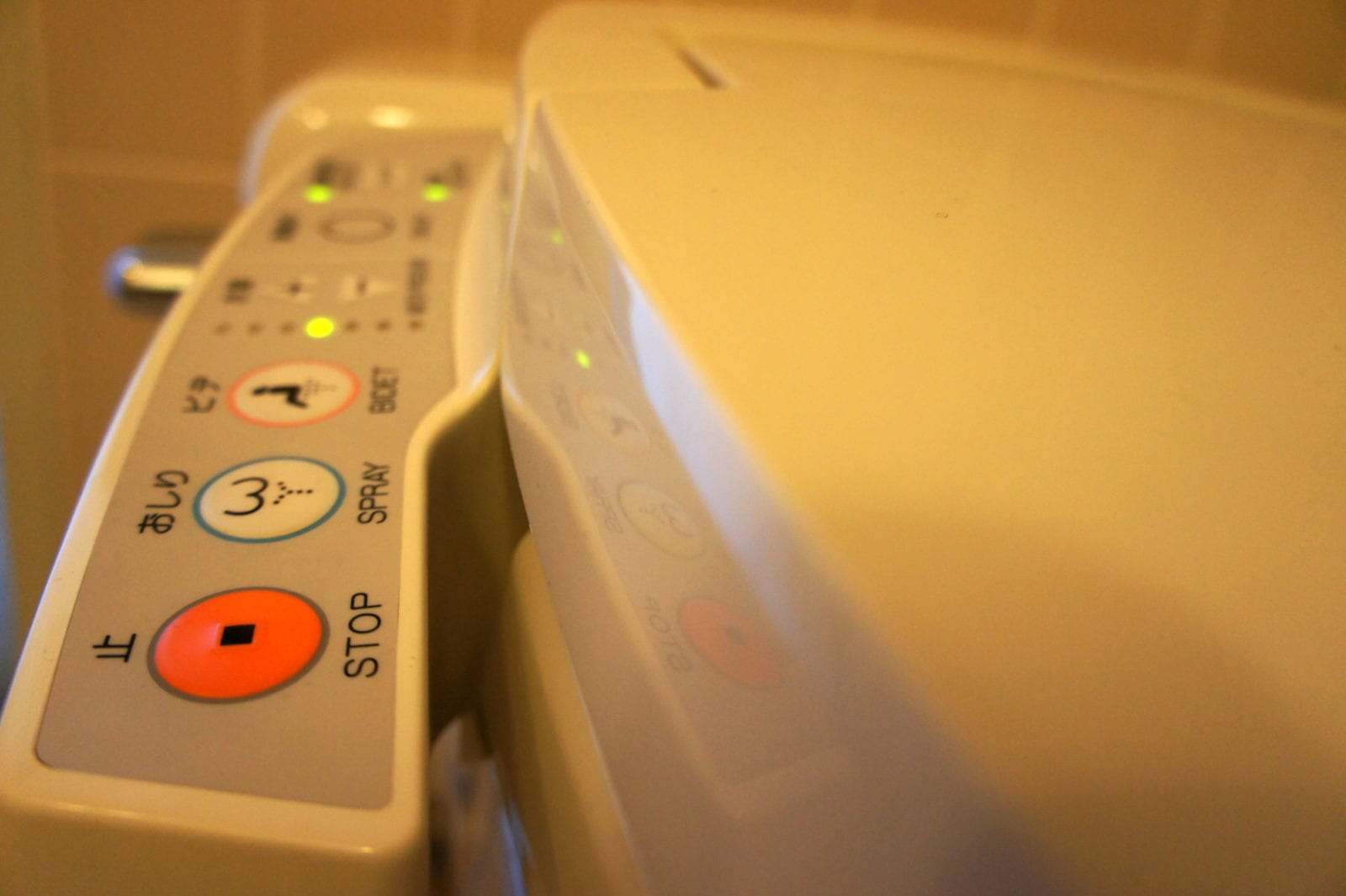It’s my first night in Japan. I walk into the bathroom of a small restaurant in Narita and suddenly the toilet springs to life, flipping up its cover and launching into a muzak-style serenade of Scarborough Fair.
For a moment, I’m on the defensive. Why is this inanimate object—upon which I’m about to perch in a rather vulnerable way—so eager, so… active? But then I remember: This is Japan. In a place where I can’t even read the language, I don’t have a fighting chance at correctly ascribing motivation to a toilet.
- Related: How to Stay Healthy on Vacation
Heated seat aside, that first encounter is somewhat chilly. The toilet warbles its way through the English ballad as I sit, semi-terrified. I carefully avoid touching any of the mysterious controls on the wall, wondering if this song, with its lyrics about laundering shirts in a well where rain never fell, has been about toilets all along.
After dinner, I check in at a hotel and head to my room. I’m greeted by a low bed, slippers, and in the bathroom, a Toto Washlet toilet seat, ready to spray and dry. I eye it suspiciously and head to bed.
Learning to Love the Japanese Toilet
Over the next 24 hours, as I make my way through hotels, restaurants, a sake factory, temples, shrines, and small-town public toilets, I realize toilets that clean, sing, and warm are no novelty—they’re expected, even unexceptional in Japan.
The first time I visited Japan was in 1989. At that time, Japanese-style toilets were everywhere; in my memory, it was rare to find a Western-style toilet. And that’s when it hits me: In the last few decades, Japan has had the chance to do what the U.S. has not: To reinvent its relationship with the toilet in a technologically advanced age. In most of North America, low-flush toilets are still about as advanced as it gets. But we’ve never really gotten past pure utility to address comfort and hygiene issues that, it turns out, a toilet can handily solve.
In a place where I can’t even read the language, I don’t have a fighting chance at correctly ascribing motivation to a toilet.
So, I embrace my host culture and start pressing buttons. As my hand hovers over the control panel for the first time, trying to decide which to push, I understand that to live dangerously is to blindly mess with buttons labeled in Japanese while already sitting on a toilet. On those first few visits, bodily harm or being unexpectedly launched into space all seem like very real possibilities each time I select a button at random.
But once I commit, I quickly come to understand the general options, the different symbols, and the myriad benefits of these super toilets. And it draws attention to something I had never really noticed before—North American toilets have a lot of room for improvement. Rethinking the bathroom experience solves problems ranging from cold seats to scratchy toilet paper. After three days, I’m a convert. I’m ready to buy one for home, and I start researching Toto Washlets available in the U.S.
That’s not to say there aren’t some bumps along the way. In one department store bathroom I see an unfamiliar button and press it; it triggers the sound of a fake toilet flush, but it’s stuck at top volume and will not turn off. I flee the bathroom, the sound of an endlessly flushing electronic toilet echoing behind me. And then there’s the incident with what I can only assume is a misaligned water jet that leaves me with a wet jacket on a cold day. But these are minor issues, which I attribute mostly to the learning curve, and I leave Japan seeing an old object in a new way.
- Related: 17 Best Flight Booking Sites
Back in the U.S., as an early Christmas present to myself, I go and get a massage at a spa. Everything about the spa is geared toward comfort and luxury. The bathrobes are soft and warm and the locker room is full of indulgent extras. But the toilets? They underwhelm. They’re clean and well stocked, but ultimately aren’t much better than a toilet from two centuries ago. And this backside neglect suddenly feels like a glaring cultural oversight.
It’s time, America.
More from FamilyVacationist:
- 5 Great American Cities for Splash Pads
- The 3 Secrets of a Happy Family Vacation with Grandparents
- 5 Simple Tips for a (Nearly) Perfect Family Vacation













